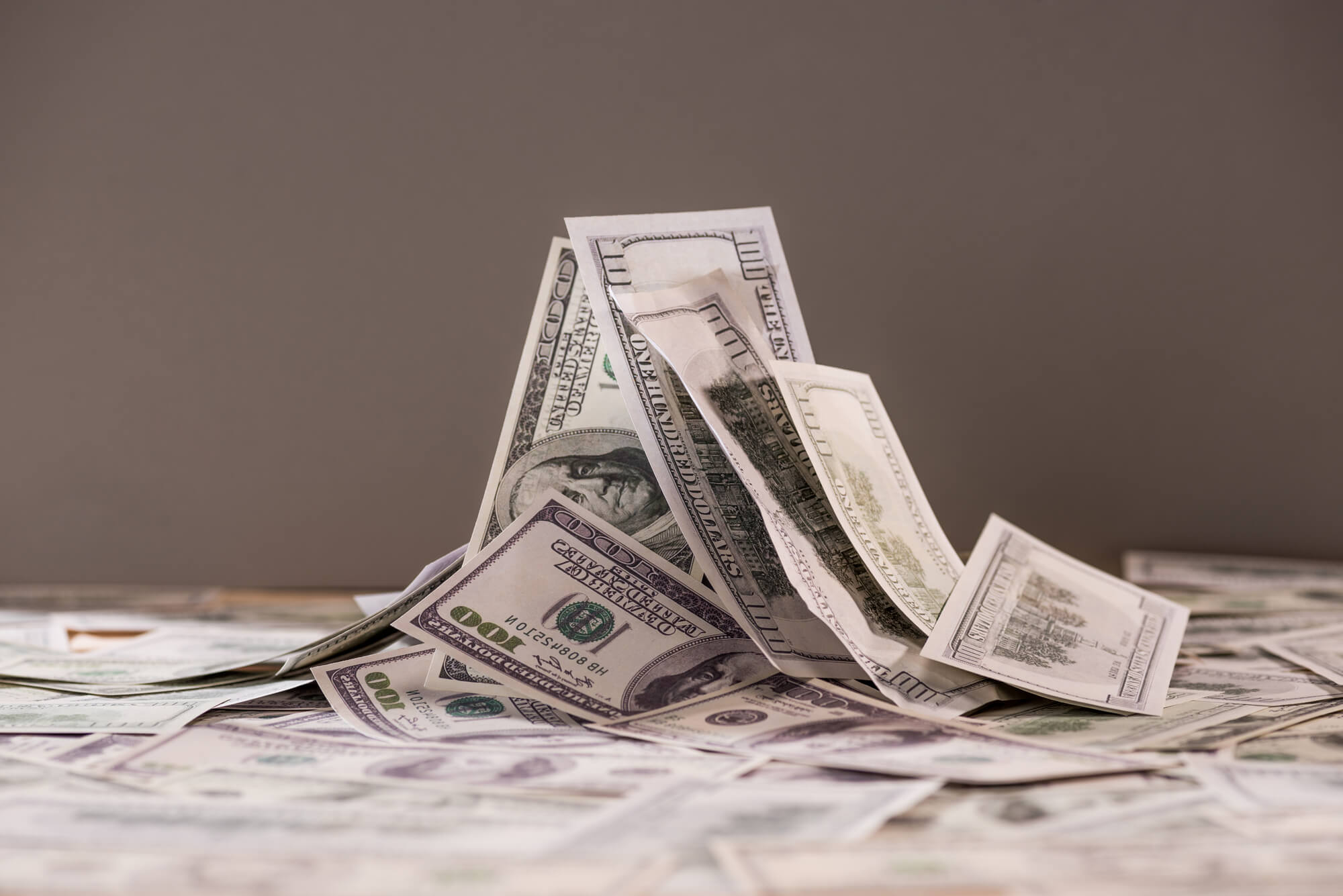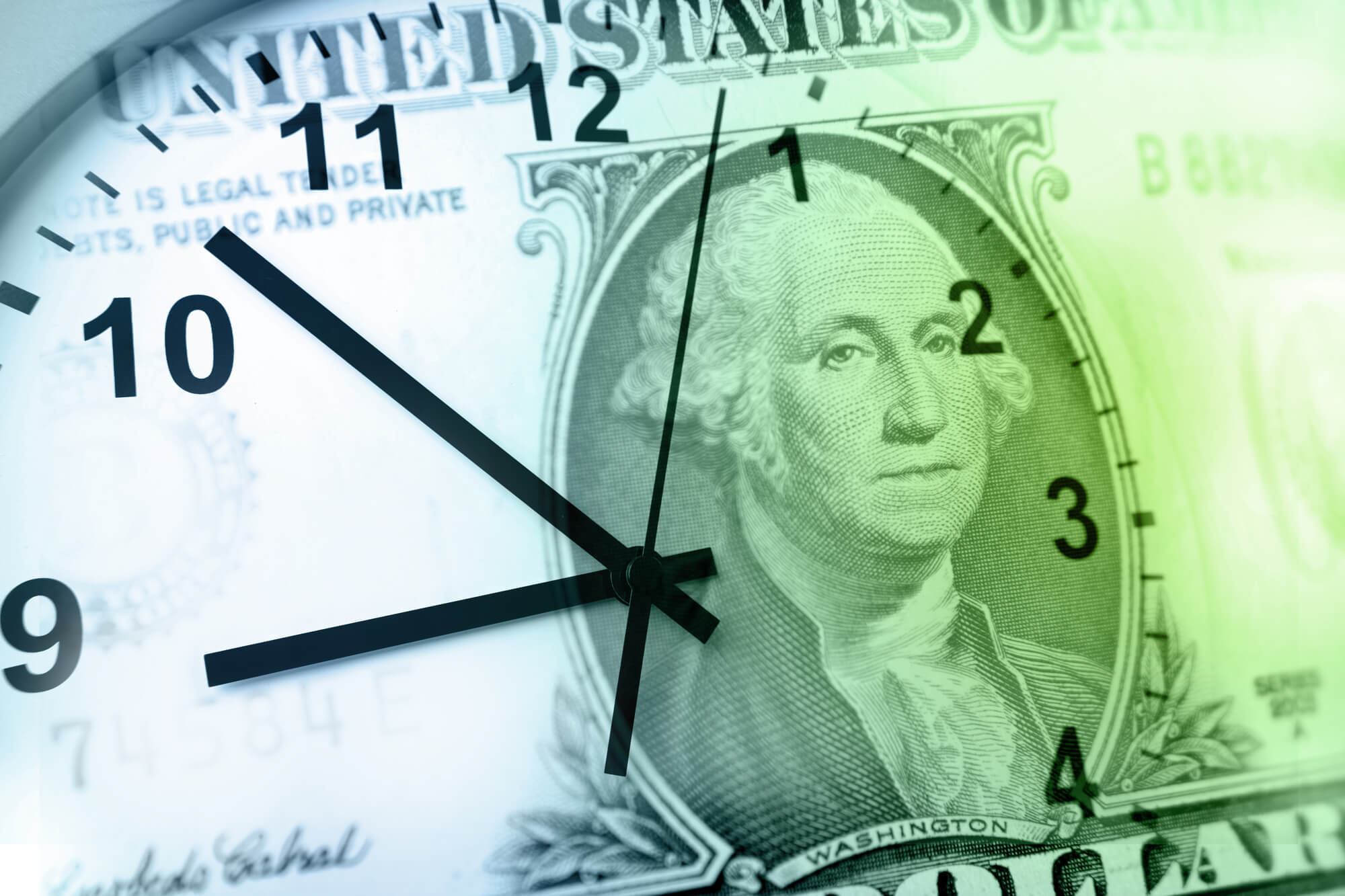Ever wonder how much money your family members or colleagues save on a regular basis? It may be a lot less than you think.
Americans save around 7% of their income on average. As a general rule, you should increase your savings rate 3-13% more (to 10-20% of your income) to beat the national average. For those trying to reach financial independence, you should increase your savings rate 43% more (to 50%).
By setting aside 20-50% of your income, your savings rate is guaranteed to be higher than the national average. Beating the national savings rate will enable you to reach your financial goals in well under the traditional 40+ years it would otherwise take.
What is the National Savings Rate?
For the last 10 years, Americans have saved around 7% of their income on average. Though savings took a sharp increase in April of 2020 due to the Coronavirus pandemic, they have tapered off while ultimately staying higher than the previous decade. In recent history, however, savings rates rose generally in the US following the housing crash of 2007, but ultimately trailed off and settled back to ~7% average.
This is despite the conventional wisdom to save 10-20% of your income. Generally speaking, Americans typically save less than they otherwise should when planning for the future.
How to Achieve a Higher-Than-Average Savings Rate
When it comes to investing, it’s wise to be average. A 7% return can carry you all the way to financial independence. But when it comes to your personal savings, you need to be better than most. Why? Because the less you save and the more you spend, the longer it will take you to reach financial independence.
If you had a savings rate of 5%, it would take you 65 years to reach financial independence (assuming a current zero net worth, 5% annual returns, and an FI number calculated with the 4% rule). Conversely, if you increased your savings rate to 25%, you could reach financial independence in 32 years. Increasing your savings rate to 50% would make it possible for you to summit your financial mountain in a mere 17 years.
| Savings Rate | Years to Reach Financial Independence |
| 5% | 65 |
| 25% | 32 |
| 50% | 17 |
| 75% | 7 |
Cutting back on your biggest expenses, increasing your income, and automating and investing your savings are three guaranteed strategies to help increase your savings rate and beat the national average.
Cut back on big expenses. Strategically bringing down your housing, food, and transportation costs will increase your savings rate faster than cutting back on smaller monthly expenses like entertainment or subscription services. Lower housing costs by finding ways to decrease your rent or offsetting your mortgage payments with rental income. Decrease food costs by making home cooked meals instead of eating out. Eliminate unnecessary travel costs by taking public transportation instead of driving and paying for gas. Decreasing each major category will help you reach a higher savings target fast
Increase your income. You can cut expenses only so much. Note: it’s impossible to spend less than $0. However, there is a limitless amount of money you can make. If you were to increase your income by $25,000 and keep your expenses the same, your savings rate would automatically increase. For example, if your expenditures were $75,000 and you had an of $100,000 income, your savings rate would be 25%. Instead, if your expenses stayed the same, and your income increased by $25,000, your savings rate would now be ~40%! All without a major change to your lifestyle.
Automate and invest savings. Automating your savings can be a way to shield your money from spending you might otherwise be tempted to make. Enroll in your company’s 401(k), open an IRA, and begin investing to take advantage of pre-tax benefits. Additionally, find other savings vehicles that will increase your savings rate. Put your money to work by investing in index funds or other investments that will yield a return on your money.
For greater details and examples on how to increase your savings rate, check out this article.
Which Countries Have the Highest Savings Rate?
In total, Americans are generally bad when it comes to saving their money. When compared to other countries, America doesn’t even rank in the top 10. The country with the highest savings rate is Macao (64%). The country with the second highest savings rate is Republic of the Congo (61%). And the country with the third highest savings rate is Qatar (58%).
| Country | Savings Rate |
| Macao | 64% |
| Republic of the Congo | 61% |
| Qatar | 58% |
| Ireland | 58% |
| Brunei | 55% |
| Singapore | 54% |
| Luxembourg | 53% |
| Gabon | 52% |
| United Arab Emirates | 48% |
| China | 45% |
No matter the list you pull up and regardless of the organization performing the analysis, the United States does not rank high. This is despite the fact that the overall dollar amount saved in individual households may be several thousands of dollars.
Why Are Americans Bad at Saving Money?
All this said, why are Americans bad at saving money? Why do we save less than we know we should, and why do many other countries save more than us?
In total, it’s hard to not spend or to stop spending money because of mental accounting fallacies, failure to delay gratification, indulgences in retail therapy, sunk cost fallacies, social peer pressure, general overspending, and even shopping addictions.
When we spend more money than planned, it’s often because of a perceived need – whether that’s the need for the actual item, a need to be seen a certain way, a need to care for an unbalanced aspect of your life, or a need to enjoy gratification now. Those needs can manifest themselves as mental fallacies, all of which can lead to spending money when unnecessary.
We have many accounting fallacies mentally, and often fall victim to budgeting or income source mental fallacies. Studies have also shown that humans have difficulty failing to delay gratification, which often leads to spending in the present via retail therapy or because of social peer pressure. Monetary self-rewarding is easy due to the spending access credit cards enable, and can even feed harmful shopping addictions.
For more details on why we’re bad with money and for ways to overcome overspending, read here.
Summary
In order to reach financial independence, you’ll need to beat the average. Saving more than 7% annually, and increasing your savings rate to 20% or 50% will quicken your pace up your financial mountain. Understanding that we’re below average savers nationally can help you learn the best practices worldwide to greater financial stability and longevity.
More Savings Rate Articles
If you’re hungry to learn more about your savings rate, we’ve put together a comprehensive guide for you that will teach you everything you need to know.
Ultimate Savings Rate Guide: Everything You Need to Know
Looking for deeper dives on a particular subject? Check out the rest of the articles from our Savings Rate series.
Savings Rate 101: How to Calculate Your Savings Rate
Savings Rate 301: Avoid These Pitfalls With Your Savings Rate
Savings Rate 401: How to Determine the Best Rate For You
Savings Rate 501: The Best Ways to Increase Your Rate
Savings Rate 601: Increase Income or Cut Expenses?
See you at the top of your financial mountain.
Climb on, FinBase.









